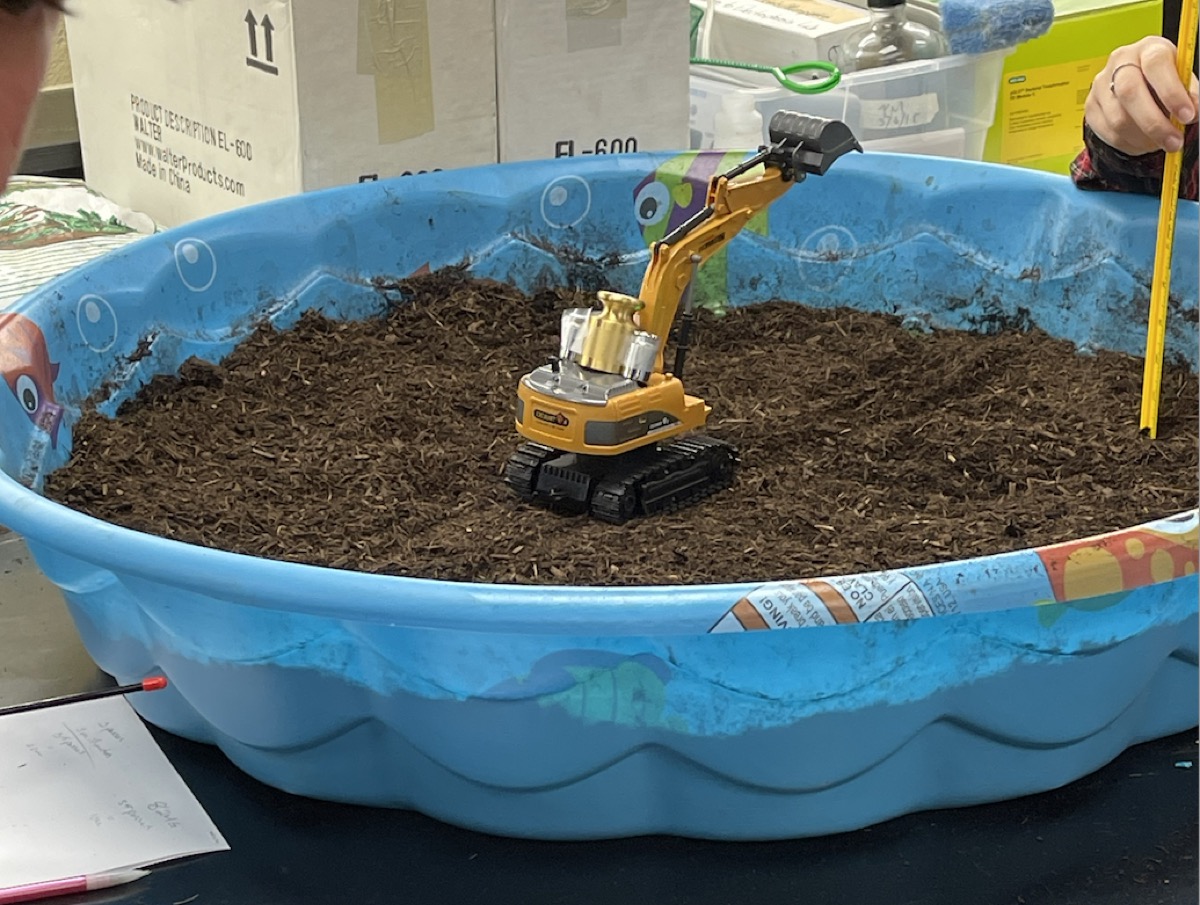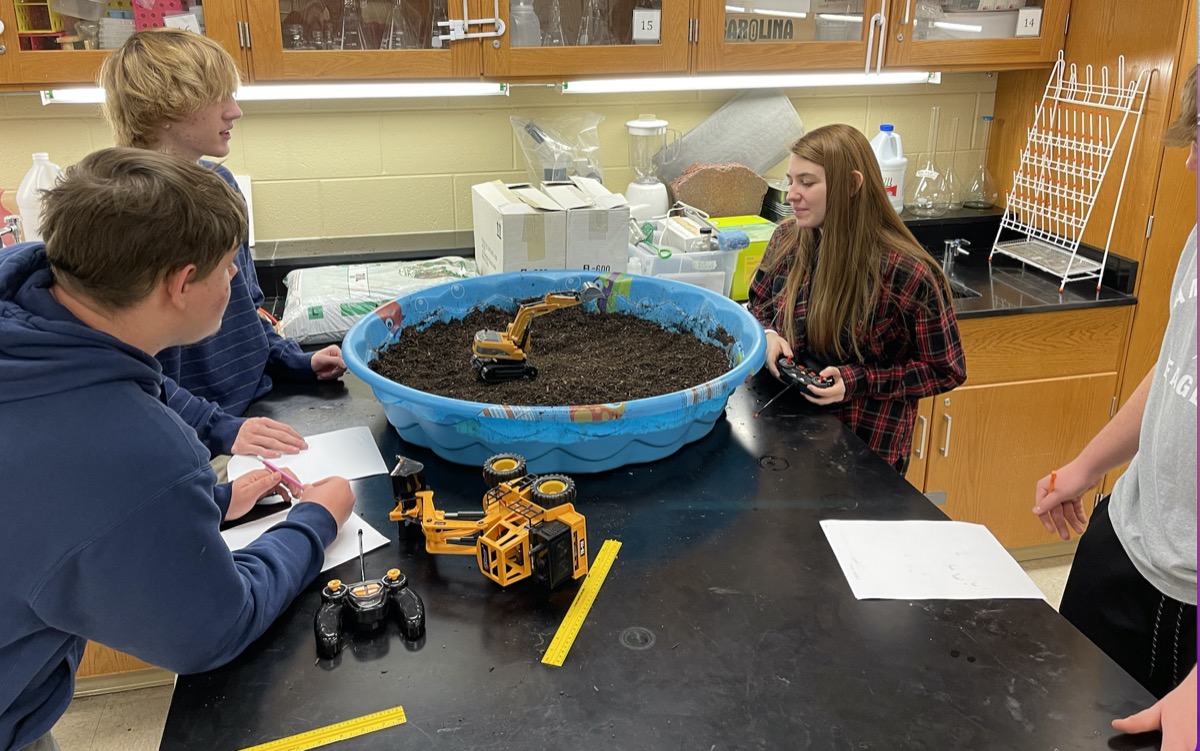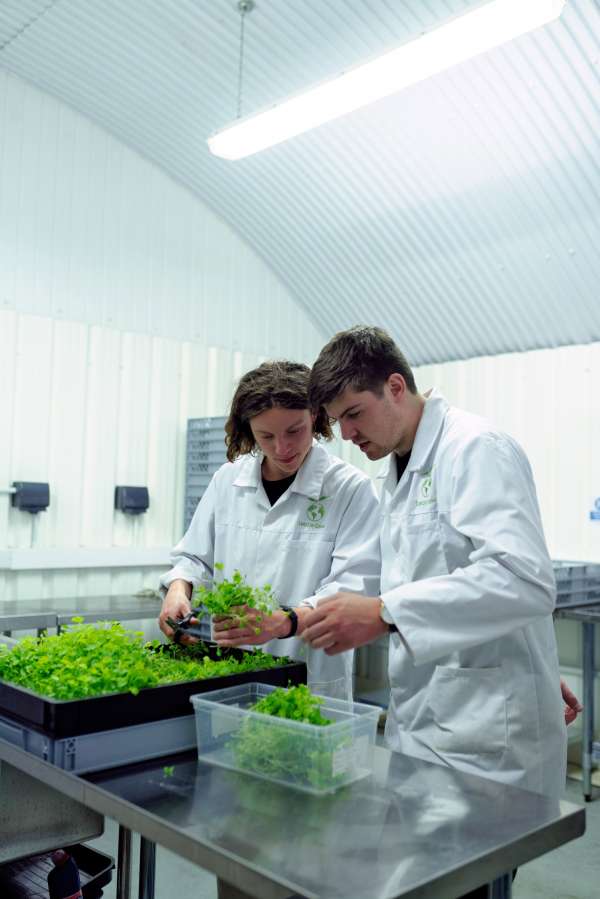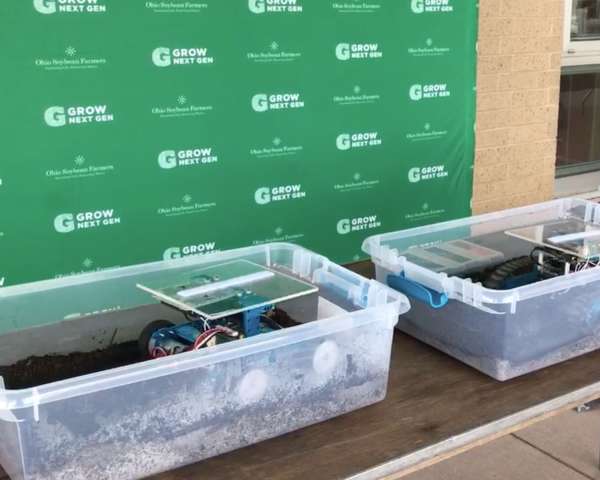GrowNextGen leader Kathy Daniels recently challenged her AP Environmental Science students to consider which would cause more soil compaction—treads or tires? This is part of our Engineering solutions in agriculture lesson.
Engineering and technological advances made in agriculture over the past 20 years have helped to integrate new technology into the modern farm operation, aiding in sustainability, return on investment, and efficiency. Different tread designs and wheel configurations have been used to reduce soil compaction from tractors as they make trips across the field to spray herbicide, fertilize and plant the field in the spring, and to spray additional herbicide or pesticide as needed throughout the growing season.
Daniels’ class hypothesized that the vehicle with treads would cause less compaction than the vehicle with tires because the tractor’s mass is spread out over a larger surface area. To test this theory, they took turns driving the two tractors back and forth in the same path, trying to make tread marks to determine how deep the wheels would sink into the topsoil.

They used two different tractors, a big tractor with tires that weighed 824 grams, and a smaller tractor with treads that weighed 430 grams. To overcome mass difference, 400 grams of weights were taped to the smaller tractor.
Their findings? “We learned that the smaller tractor caused less soil compaction. We agreed that this could have been from less weight regarding the machinery. Another possibility is that the tires were more harmful to the soil than the tread marks were. Overall, both tractors caused damage, but the soil was less compacted with the smaller tractor.”
The group proposed ways to reduce soil compaction in farm fields:
- Making farm machines lighter, like the smaller tractor
- Avoiding the use of farm equipment when the soil is wet—dry soil doesn’t compress as much
- Using treads instead of tires, or at least wider tires, to spread the weight over a larger area
- Making fewer trips across the field by combining tasks like tilling, planting, and fertilizing
- Using airplanes or drones to spread fertilizer and pesticides
- Using GPS so that farm equipment goes in slightly different paths each time it is in the
field - Planting fields in different directions each season to keep equipment from making ruts
- Planting crops that don’t require a lot of pesticides or fertilizers, resulting in fewer trips across the field





Share this